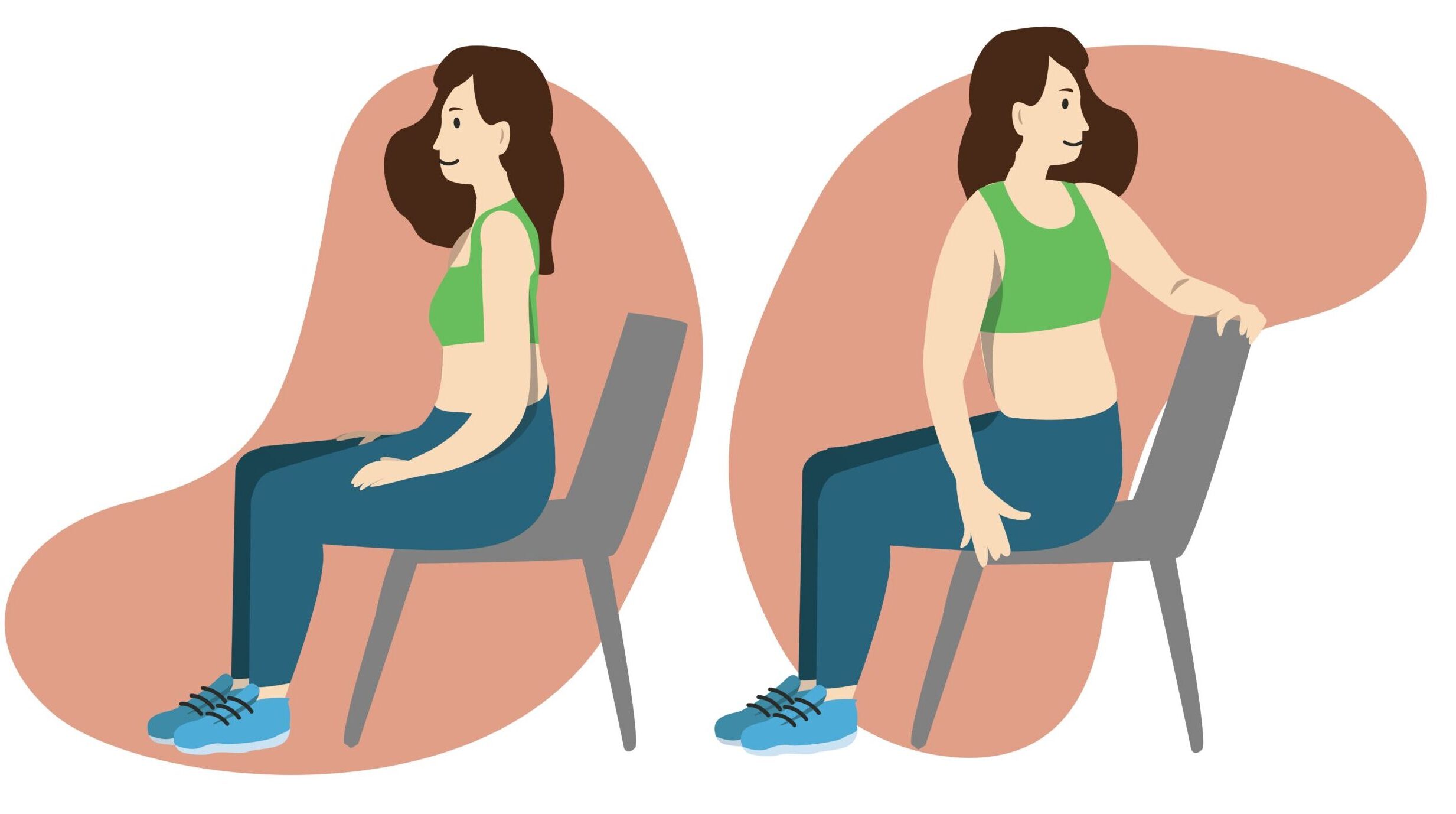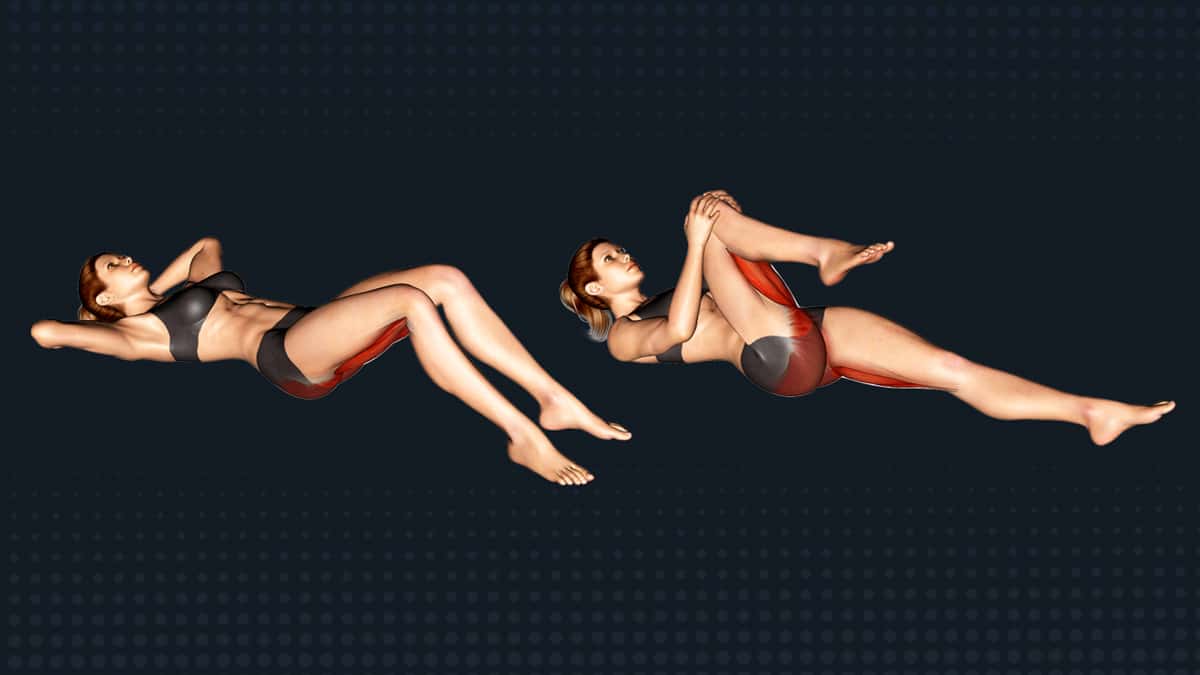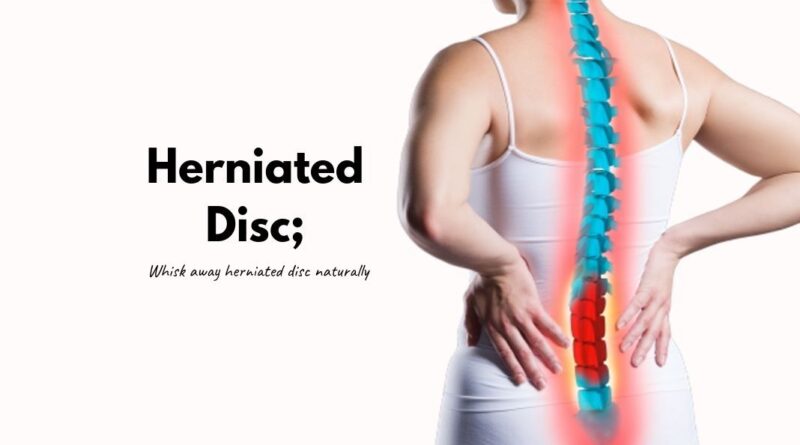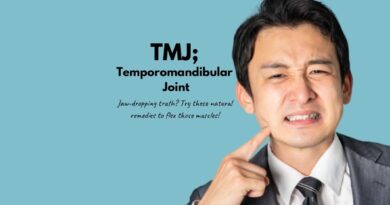Little-Known Tips for Herniated Disc Pain Relief
Aherniation occurs when there is a bulge in the intervertebral disc. The spine is made up of stacked vertebrae that are separated by a gel-like substance, the intervertebral disc. In some cases, the intervertebral disc bulges out and pushes against the spine or spinal nerves, causing discomfort and pain. This is known as a herniated disc. Herniation can occur on any part of the spine.
Table of Contents
Did You Know!
| 20% of people under the age of 60 have at least one bulging disc(1) |
Following are the most common symptoms of a herniated disc:
- Lower back pain in case of herniation closer to the buttocks.
- Neck pain in case of herniation of discs closer to the upper body.
- Shooting arm pain.
- Leg pain that shoots up and down.
- Numbness or tingling in the leg.
- Weakness in the leg.
- Sciatica pain caused.
A herniated disc can often be healed at home through rest, exercise and stimulation (massage, etc.). If you’re wondering how to heal a herniated disc naturally, here are 17 home remedies to help you get better.
How to Heal a Herniated Disc Naturally
- Exercises
- Foods
- Essential Oils
- Supplements
- Alternative Remedies
CURE 1: Exercises
1. Neck Stretches

Why use?
A herniation closer to the upper body can cause neck pain. This particular exercise helps treat a herniated disc closer to the neck and helps relieve neck pain.
How to use?
- Sit on a chair with your back straight. Your head should have space to move backward with no obstacles like a headrest or a wall.
- Gently tilt your head downward, moving your chin towards your chest. Once you reach the maximum point, tilt your head up and backward, stretching your neck.
- Move your head back to the neutral position.
- Now tilt your head to the right, moving your right ear closer to your shoulder, then repeat on the left.
- Repeat this complete exercise for 10-15 reps.
How much to use?
3 sets of 10-15 repetitions every day.
2. Seated Chair Stretch

Why use?
A herniated disc in the lower end of the spine causes lower back pain. This exercise helps relieve lower back pain and also strengthens your hamstring and abdominal muscles helping you better support your core and your back.
How to use?
- Sit straight on a chair. Place one foot on the floor completely grounded while stretching the other leg forward with the heel grounded on the floor.
- With your back straight, lean forward over the extended leg. You will feel a stretch along the hamstring muscle of the leg that is extended.
- Stay in this position for 15-30 seconds, or as long as it is possible.
- Switch legs and repeat.
How much to use?
3 sets of 10-15 repetitions every day.
3. Towel Hamstring Stretch
Why use?
This exercise helps relieve lower back pain and stretches and strengthens the hamstring more deeply than the seated chair stretch.
How to use?
- Lie down flat on a yoga mat or the floor if you’re comfortable. Fold your legs with your knees up.
- Gently lift one leg up towards your body. Wrap a towel or strap around the foot of this leg holding either side of the towel.
- Slowly pull the leg towards your body. You will feel a stretch along the hamstring of the raised leg.
- Hold this position for 15-30 seconds.
- Switch legs and repeat.
How much to use?
3 sets of 10-15 repetitions every day.
4. Back Flexion Stretch
Why use?
If you’re wondering how to heal a herniated disc with exercise, this is one of the best methods. This exercise helps stretch the spine and the back muscles providing relief from pain caused by a herniated disc and also strengthens the muscles supporting the spine.
How to use?
- Lie down on your back on a yoga mat or the floor
- Fold your knees and raise them towards your chest. Hold both knees, helping them get closer to your chest.
- As you get your knees closer to your chest, lift your head and tilt it forward toward your kneed. Bring your knees and head as close as possible, until there is a comfortable stretch across the mid and low back.
- Repeat this 10-15 times.
How much to use?
3 sets of 10-15 repetitions every day.
5. Knee to Chest Stretch

Why use?
If you’re thinking how to heal a bulging disc naturally, the knee to chest stretch helps relieve pain and heal herniation in the lower back. This exercise also targets the muscles located towards the sides of the body.
How to use?
- Lie down on your back on a yoga mat or the floor.
- Bend your knees while grounding both your feet.
- Take both your hands and hold one knee. Slowly pull it upwards towards your chest.
- Switch legs and repeat.
How much to use?
3 sets of 10-15 repetitions every day.
6. Piriformis Muscle Stretch
Why use?
This exercise stretches and strengthens the piriformis muscle, a small muscle located deep in the buttocks. It helps relieve pain caused by a herniated disc in the lower spine.
How to use?
- Lie down on your back on a yoga mat or the floor if it is comfortable.
- Bend your knees while keeping your feet firmly grounded.
- Raise the leg and cross it over the other, with the ankle of the lifted leg resting on the knee of the other.
- Hold the ankle of the crossed leg and gently pull the leg towards your chest. Continue to do so until you feel a stretch in the buttocks.
- Repeat on both sides.
How much to use?
3 sets of 10-15 repetitions every day.
CURE 2: Foods
1. Fatty Fish

Why use?
Fatty fish contains omega-3 fatty acids that have anti-inflammatory properties that help in the treatment of a herniated disc. Fatty fish like Salmon also contain Vitamin D that is vital in improving Calcium absorption to strengthen the bones of the spine.
How to use?
Eat fatty fish like salmon, sardines, and tuna, or take cod liver oil capsules.
How much to use?
Eat fatty fish 2-3 times a week.
2. Dark Green Leafy Vegetables
Why use?
Dark green leafy vegetables like kale, Collard greens, Mustard greens, Spinach and bok choy are rich sources of calcium and vitamin K, both of which are important to improve bone strength and density. Strengthening the spine is an important recovery step for a herniated disc.
How to use?
Cook leafy greens separately or mix them in other foods when cooking.
How much to use?
Include dark leafy greens in at least one meal every day.
3. Garlic
Why use?
Garlic can work wonders in treating problems with the back and spine, including a herniated disc. Garlic contains anti-inflammatory compounds, boosts immunity, and is packed with Calcium and other minerals and nutrients. Consuming garlic as a part of your regular diet can help relieve pain from a herniated disc and heal it over time.
How to use?
Add garlic to your food when cooking as per taste.
How much to use?
Include one or two cloves of garlic in at least one meal a day.
CURE 3: Essential Oils
1. Black Pepper

Why use?
Black pepper essential oil contains analgesic and antispasmodic compounds that relieve pain and provide a warming effect when used for massage. It helps improve blood circulation and is often used for nerve pain like nerve pain such as sciatica and neuralgia, and can be used to help heal a herniated disc.
How to use?
Dilute black pepper essential oil with a carrier oil like coconut oil and massage the area of the back that is affected.
How much to use?
As much oil as is needed to cover the affected.
2. Chamomile
Why use?
The anti-inflammatory and painkilling compounds in chamomile help relieve pain caused by herniation and also reduces inflammation.
How to use?
Mix chamomile oil in with 2-3 drops of carrier oil, like almond oil and massage the affected area.
How much to use?
As much as needed to cover the affected area, applied once or twice a day.
3. Frankincense
Why use?
A compound named Limonene in frankincense essential oil exhibits anti-inflammatory properties, and another compound Borneol exhibits anesthetic, sedative, and antispasmodic properties. These compounds provide relief from joint and muscle pain, which is why it helps with a herniated disc.
How to use?
Dilute frankincense essential oil in equal parts of carrier oil, like coconut oil and massage the affected area.
How much to use?
Equal parts of frankincense essential oil and carrier oil. Use as much as needed to cover the affected area.
4. Geranium

Why use?
The geranium essential oil has anti-inflammatory compounds and helps improve blood circulation around the area it is applied. It is popularly used as a remedy for rheumatism and neuralgia and helps heal a herniated disc as well.
How to use?
Dilute the geranium essential oil with a carrier oil like coconut oil or almond oil and massage the affected area.
How much to use?
1-2 drops of geranium essential oil mixed with 8-9 drops of carrier oil. Use as much as is needed to cover the affected area.
5. Peppermint
Why use?
The menthol in peppermint essential provides a cooling effect while also providing relief from pain caused by the herniation. It also helps with stiffness in muscles surrounding the inflamed disc.
How to use?
Apply peppermint essential oil directly to the affected area to get relief from a herniated disc.
How much to use?
As much as needed to cover the affected area, applied once or twice a day.
CURE 4: Supplements
1. Vitamin C
Why use?
Vitamin C helps in the creation of collagen that is needed for tissue repair. Vitamin C has proven to be beneficial in healing a herniated disc.
How to use?
You can get Vitamin C from foods like bell peppers, broccoli, citrus fruits, cauliflower, and spinach, but if you’re not getting adequate amounts of Vitamin C, you can take supplements.
How much to use?
Take supplements as prescribed by your doctor.
CURE 5: Alternate Remedies
1. Heating Pads

Why use?
The heat helps improve blood circulation. Placing a heating pad on the affected area will provide relief from pain and also speed up recovery because of increased blood flow.
How to use?
You can apply a heating pad or a steamed towel to the affected area.
How much to use?
Use as often as you like for relief.
2. Alternating Cold and Hot Compresses
Why use?
While applying heat to the affected area increases blood flow, applying something cold helps reduce inflammation and swelling of the disc. If you’re wondering how to fix a bulging disc, alternating between hot and cold therapies is a great way to get the benefits of heat and cold.
How to use?
When you first experience pain from a herniated disc, it is best to start with cold therapy to help the swelling subside. Follow this up with heat therapy to improve blood flow and speed up healing. You can then alternate between cold and hot compresses.
How much to use?
Use as often as you like for relief.
How to Avoid it?
Disc herniation occurs because of the gradual wear and tear of the intervertebral discs. This happens as you age and also because of prolonged vigorous activity that damages the disc. Your weight, genetics, habits and day-to-day activities also factor in. You can take the following precautions to avoid getting a herniated disc, or to avoid the aggravation of one:
- Exercise – Perform exercises that strengthen the trunk muscles, which stabilize and support the spine.
- Maintain good posture – If your job involves you sitting for most of the day, make it a point to maintain good posture and a straight back.
- Maintain a healthy weight – Being obese applies strain on the spine and compresses the intervertebral discs, often leading to herniation.
- Avoid unhealthy habits – Smoking and drinking can lead to the degradation of the bones.
If you’re wondering how to fix a herniated disc, herniation needs rest, the right exercises and external stimulants to heal completely. If your worry is can a herniated disc heal naturally, with the home remedies and prevention methods outlined in this article, you will be able to get relief from a herniated disc and speed up recovery.
FAQs
1. Is a herniated disc dangerous?
A disc herniation often heals on its own with rest and appropriate remediation. In case of shooting pain and side effects like a fever, you may need further attention. Surgery helps in severe cases.
2. How long does a disc herniation take to heal?
It usually takes between 4-6 weeks to heal.




